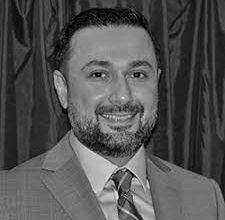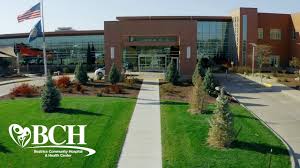Madeline Gail Andrews: A Pioneer in Neuroscience and Stem Cell Research
Transforming Brain Science with Revolutionary Research

Transforming Brain Science with Revolutionary Research
Madeline Gail Andrews is an eminent figure in the fields of developmental neuroscience and stem cell biology. Her groundbreaking research on brain organoids and neurodevelopmental diseases is paving the way for innovative therapeutic approaches. With a relentless focus on understanding human brain development and disease mechanisms, she is redefining how science approaches some of the most complex challenges in healthcare.
The Early Foundations of Excellence
Madeline Gail Andrews began her academic journey with a bachelor’s degree in psychology at Arizona State University (ASU), where she graduated as a member of Barrett, The Honors College. Her innate curiosity about the human brain led her to pursue a PhD in neuroscience from the University of California, Los Angeles (UCLA), which she completed in 2017. Her doctoral research explored the intricate signaling pathways that govern tissue development and cell fate specification.
Postdoctoral Research: A Focus on Human Brain Development
Following her doctoral studies, Andrews joined the University of California, San Francisco, as a postdoctoral fellow. Her research during this time concentrated on human cortical development, delving into how the cerebral cortex forms and functions. Her innovative use of stem cell models to replicate human brain development provided unique insights into the origins of neurodevelopmental diseases.
Groundbreaking Research at ASU
In 2022, Andrews returned to her alma mater as an assistant professor at the School of Biological and Health Systems Engineering, part of ASU’s Ira A. Fulton Schools of Engineering. Her lab focuses on using cutting-edge technologies like single-cell transcriptomics and organoid models to explore the mechanisms underlying brain development and diseases.
Key Research Areas
Brain Organoids
Andrews utilizes three-dimensional organoids to replicate human brain tissue, offering unprecedented opportunities to study brain function and dysfunction in a laboratory setting.
Stem Cell Biology
Her work with induced pluripotent stem cells (iPSCs) aims to model and understand neurological diseases more accurately.
Neuro-Immune Interactions
She investigates how the immune system interacts with the developing brain, uncovering potential targets for therapeutic intervention.
Metabolic Research
Andrews explores how cellular metabolism influences brain development and disease, an innovative angle often overlooked in traditional neuroscience.
Collaborative Efforts for Greater Impact
Madeline Gail Andrews has established significant collaborations to enhance the impact of her work. One notable partnership is with the Mayo Clinic, supported by an ASU-Mayo seed grant. Together with Dr. Clifford Folmes, Andrews is developing advanced iPSC models to study the brain and heart. These models aim to replicate native tissue environments more faithfully, enabling better disease modeling and therapeutic screening.
The Power of Innovation in Neuroscience
A distinctive feature of Andrews’ research is her emphasis on mimicking in vivo conditions within laboratory models. By recreating the nutrient and metabolic environments found in the human body, her lab has made strides in improving the accuracy of disease models. This approach has implications for understanding conditions like mitochondrial encephalomyopathy and lactic acidosis, offering hope for new treatments.
Recognitions and Contributions to the Field
Madeline Gail Andrews’ contributions have earned her widespread recognition. Her innovative methodologies and impactful findings are regularly featured in scientific journals and conferences. She is also a dedicated mentor, inspiring the next generation of scientists to tackle complex biological questions with curiosity and rigor.
The Future of Madeline Gail Andrews’ Work
Looking ahead, Andrews’ research is poised to drive significant advancements in neuroscience and regenerative medicine. By leveraging state-of-the-art technologies and fostering interdisciplinary collaborations, she is set to continue unraveling the mysteries of the human brain while contributing to the development of targeted therapies for neurological diseases.
Conclusion
Madeline Gail Andrews’ work exemplifies the fusion of scientific curiosity, innovation, and collaboration. Her dedication to advancing our understanding of brain development and disease has established her as a leading figure in her field. As her research progresses, it holds the potential to transform how we diagnose and treat some of the most challenging neurological conditions, making a lasting impact on science and healthcare.



